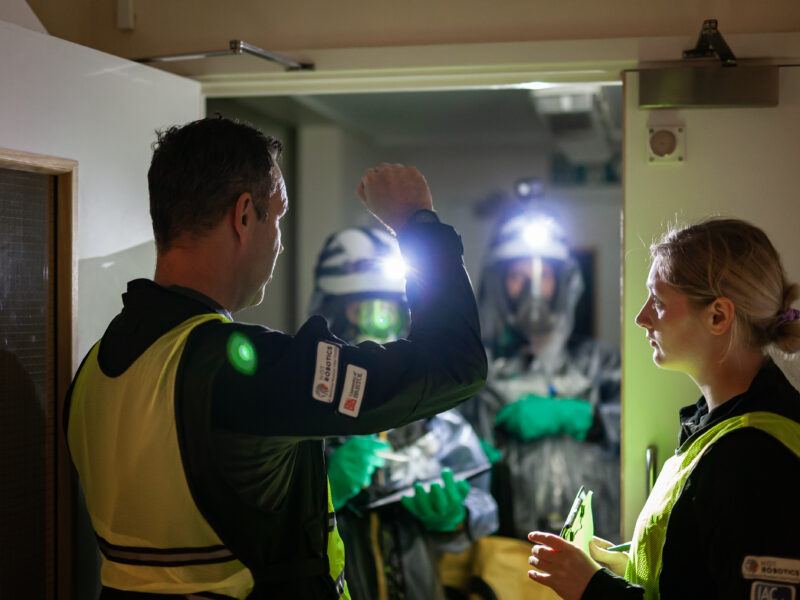
Hot Robotics supports UK government, industries and academia in nuclear preparedness exercise
A training exercise was held at a disused University of Bristol facility, with radioactive sources positioned throughout the site. The attendees were tasked with locating and identifying these sources, using a range of equipment and techniques. The exercise was hosted by University of Bristol staff in conjunction with experts from Sellafield and GNSP and attended by University staff and representatives from industrial partners and NGOs, including a team from Ukraine.
A variety of threats were situated around the site to be dealt with alongside the lost sources, increasing the difficult of the exercise and the stressfulness of the situation.
Drones were used to perform initial radiometric and visual surveys of the exterior of the building, and threats on the exterior of the building were identified. The building was then entered by teams wearing full Tyvek PPE, using GM counters and digital radiation survey meters, performing initial reconnaissance. Groups then proceeded to systematically search the facility, using the radiation detection equipment to find and locate the sources of radiation.
The Frontier Radiation mapping system was deployed to create a 3-dimensional map of the site, which helped inform decision making and localise other measurements. To mimic the operational environment in such sites, additional events such as medical emergencies and air raid alarms were simulated.
This project is a key part of gaining the experience and skills necessary for operation in difficult environments, and identifying the correct equipment and preparations to be made for such deployments. Deploying equipment in a stressful environment can guide the future development of the work by identifying weak points of the current operational methodology, and hones our collective capability to respond to nuclear incidents.